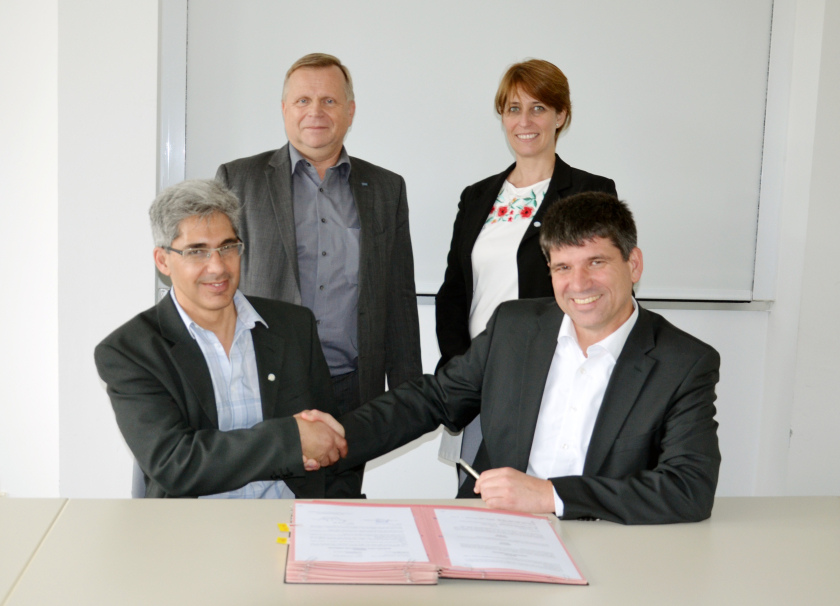HZB makes new contacts with Argentinian Neutron Beams Laboratory

Photo (from left to right): Dr. Javier Santisteban, scientific director of LAHN, Thomas Frederking, administrative director of HZB, Karina Pierpauli, CEO of LAHN, and Prof. Dr. Bernd Rech, scientific director of HZB. They came together to sign the agreement in Berlin.photo: Silvia Zerbe
Helmholtz-Zentrum Berlin (HZB) has signed a cooperation agreement with the Argentinian Neutron Beams Laboratory, LAHN (Laboratorio Argentino de Haces de Neutrones). Through this cooperation, HZB will be advising Argentinian researchers on the construction of two neutron instruments. Also planned is an exchange programme for researchers from both countries.
LAHN plans to build an instrument for residual stress analysis and for neutron tomography at its research reactor RA-10. The researchers from Buenos Aires will be receiving advice from HZB scientists who are world-renowned for their many years of expertise in the development of neutron experiments. As one of the first concrete measures, a postdoc from Argentina will be arriving at HZB at the beginning of 2018 and will receive training from the experts on site.
Visiting HZB for the signing of the agreement at the end of September 2017 were the LAHN CEO and engineer Karina Pierpauli and the scientific director Dr. Javier Santisteban. The two guests visited the experimental halls of the research reactor BER II and met for discussions with HZB managers and neutron researchers. “Through this cooperation with LAHN, we are increasing the knowledge transfer and forging ahead with the internationalisation strategy of HZB,” says Dr. Catalina Elena Jimenez, the responsible spokesperson for internationalisation in the HZB management office.
Cooperation partners: Laboratorio Argentino de Haces de Neutrones
(sz)
https://www.helmholtz-berlin.de/pubbin/news_seite?nid=14746;sprache=en
- Copy link
-
The twisted nanotubes that tell a story
In collaboration with scientists in Germany, EPFL researchers have demonstrated that the spiral geometry of tiny, twisted magnetic tubes can be leveraged to transmit data based on quasiparticles called magnons, rather than electrons.
-
Bright prospects for tin perovskite solar cells
Perovskite solar cells are widely regarded as the next generation photovoltaic technology. However, they are not yet stable enough in the long term for widespread commercial use. One reason for this is migrating ions, which cause degradation of the semiconducting material over time. A team from HZB and the University of Potsdam has now investigated the ion density in four different, widely used perovskite compounds and discovered significant differences. Tin perovskite semiconductors produced with an alternative solvent had a particular low ion density — only one tenth that of lead perovskite semiconductors. This suggests that tin-based perovskites could be used to make solar cells that are not only really environmentally friendly but also very stable.
-
Synchrotron radiation sources: toolboxes for quantum technologies
Synchrotron radiation sources generate highly brilliant light pulses, ranging from infrared to hard X-rays, which can be used to gain deep insights into complex materials. An international team has now published an overview on synchrotron methods for the further development of quantum materials and technologies in the journal Advanced Functional Materials: Using concrete examples, they show how these unique tools can help to unlock the potential of quantum technologies such as quantum computing, overcome production barriers and pave the way for future breakthroughs.
